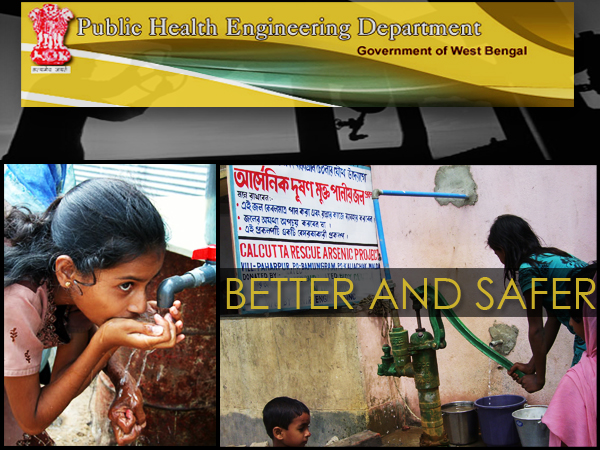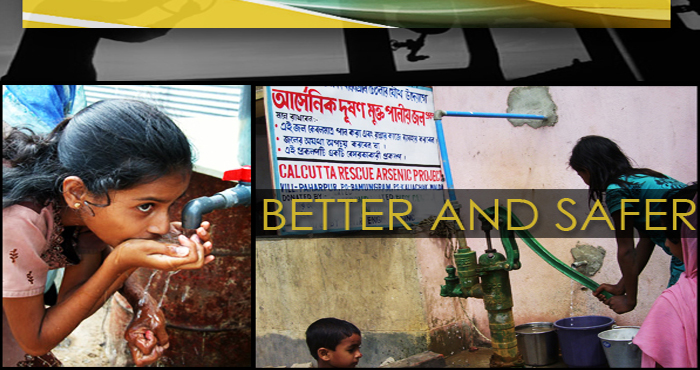West Bengal Chief Minister Ms Mamata Banerjee was on a mission from day one of current Government to ensure that the people of Bengal get the basic necessities of daily life.
With 95% electricity penetration in the state, one of the highest in the country, the State Public Health Engineering is now ensuring that clean drinking water is available in the remotest village of Bengal.
A few of their achievements are as below:
– As per Vision 2020 plan drawn by the Chief Minister, each household in villages of Bengal to get 70 litre of clean tapped water per day.
– 617 pipelined water projects have been implemented which will benefit more than 77.28 lakhs people
– Arrangements have been made to supply clean drinking water to 3815 Schools and 3401 Aganwadis. 42 thousand borewell have been dug
– At present work is underway for 637 projects to supply pipelined water at the cost of Rs 7681.69 which will serve more than 1 crore 58 lakh people
– In Jangalmahal where people used to suffer from water shortage will now get respite as out of 50 planned projects of pipelined water, 47 have been commissioned
– In Darjeeling, the ‘ Balason Pumping Project’ has been revived
– Treatment plants for arsenic, fluoride and salt are being set up to supply clean drinking water at the cost of Rs 2831.50 crore to be completed within this year
– In South 24 Parganas treatment plants at the cost of Rs 1332.41 crore has been set up to supply salt free drinking water
– In Bankura’s 14 blocks covering 30.17 lakh people, clean drinking water at the cost of Rs 1011.12 crore is set to be supplied with
– Through collaboration with JICA of Japan 9 blocks in Purulia will be covered benefitting 15.14 lakh people with pilelined drinking water supply
– In North 24 Parganas in Habra, Gaighata for 18.08 lakh people, the surface water plant at the cost of Rs 478.98 is under progress
– In Howrah under Bali-Jogachha block for benefit of 2.86 lakh people, a ground water project costing Rs 150.68 crore is being implemented.
– In drought prone and fluoride polluted areas small water treatment plants worth Rs 51.67 crore are being set up which will run with solar power. These projects catering to small localities will be completed within this month and will be part of 1000 other such small solar powered projects in the state
– Eight more water bottling plants (Prandhora) are being set up to meet drinking water needs during drought, floods and various fest and festivals.
– 15 transportable water treatment plants always ready to meet the need arising due to natural calamities / disasters
– To check water quality along with 120 old laboratories another 100 such laboratories are near completion
– In West Bengal’s 9 district in 2104 village panchayats, Village Water and Sanitation Committees (VWSC) have been set up. 15871 members under VWSC from gram panchayats are trained to keep eye on the quality, upkeep and maintenance of quality drinking water supply in the villages
– Through various medium of communication like leaflet distribution, hoardings, posters, wall writing, TV, Radio, flipcharts, school rallies and street theatres people are being constantly made aware about the need and benefits of clean water.


